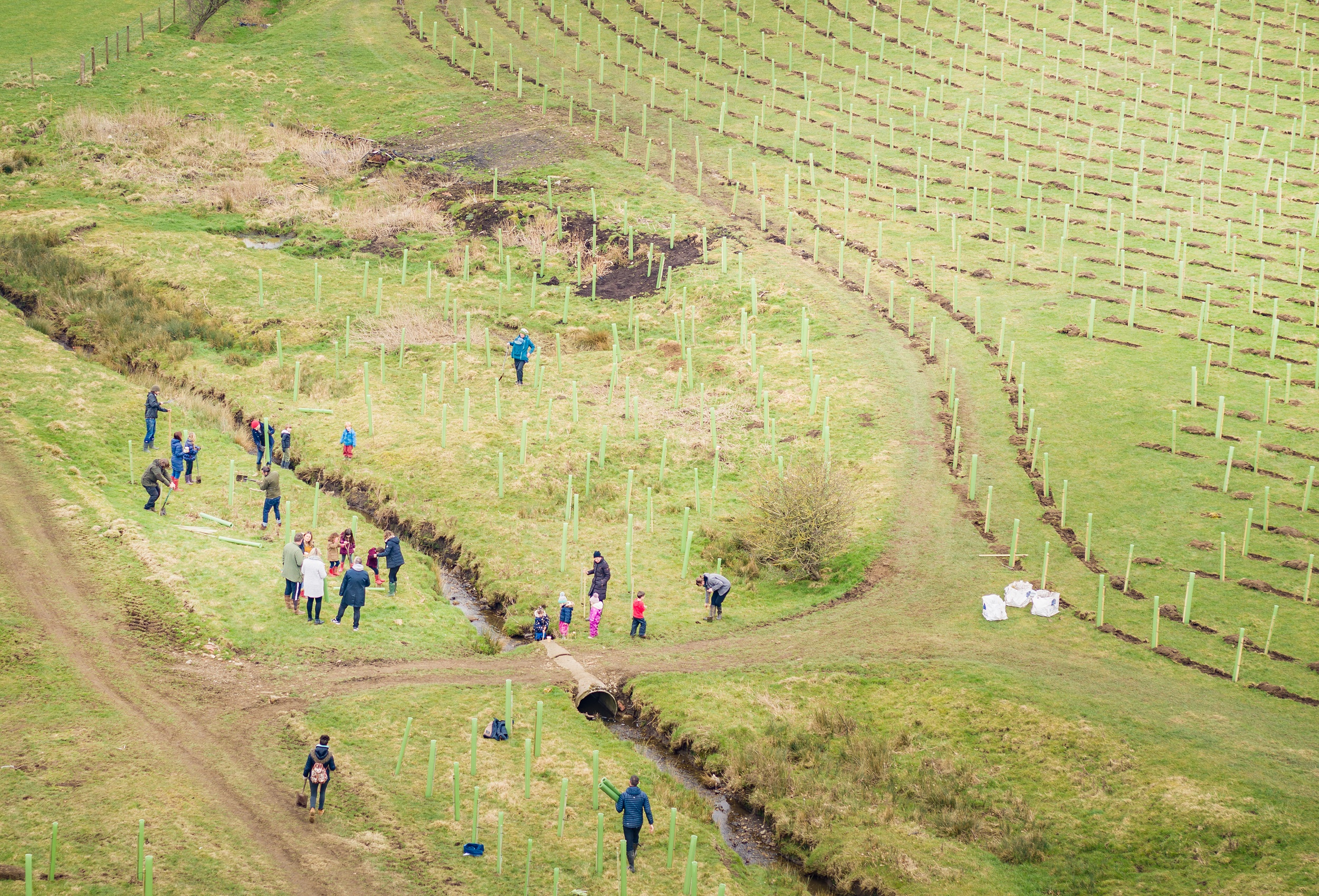The biggest tree planting scheme in England in 2021
Julia Murray from the White Rose Forest explains how Broughton Sanctuary at Broughton Hall Estate and the White Rose Forest in Yorkshire have become home to the biggest tree planting scheme in England this year.
What is the White Rose Forest?
The White Rose Forest is the community forest for North and West Yorkshire, working in partnership with local authorities, landowners, businesses and communities to plant more trees across the region and improve our natural environment. Kirklees Council provide administrative support and manage funding and donations on behalf of the partnership. We are supported by a core team of experts and are working with three other community forests in the north of England and the Woodland Trust to create the Northern Forest.
These urban and rural trees will help manage flood risk, combat climate change, create jobs and provide happier and healthier places for us all to live, work in and enjoy.
What is the project at Broughton Hall Estate?
Between December 2020 and April 2021 160 hectares of native woodland will have been planted as the first part of a wider rewilding and natural regeneration plan. That’s the equivalent of approximately 224 football pitches.
Why did the White Rose Forest support this work?
The new woodland forms part of the White Rose Forest’s Landscapes for Water planting programme that aims to reduce flood risk for urban areas situated close to major rivers and waterways in North and West Yorkshire, whilst also improving local water quality, biodiversity and recreation opportunities for local communities.
By slowing the flow of water runoff into local rivers, the trees planted at Broughton Sanctuary will help protect communities in the Aire river valley, from Skipton down to Leeds City Centre, from the risk of future damaging flooding events. The project is therefore also strategically important within the Leeds Flood Alleviation Scheme led by the Environment Agency and Leeds City Council.
Once established, the woodland will also store significant quantities of carbon - and help deliver the Government’s commitment to achieve net zero carbon emissions in the UK by 2050.
How else might people and nature benefit from this rewilding?
This work will, provide more places for nature and biodiversity to thrive, and increase people’s access to and enjoyment of woodland.
Roger Tempest, custodian of Broughton Hall Estate and his partner Paris Ackrill, co-founder of Avalon Wellbeing at The Broughton Sanctuary said: “We surely have to wake up to the fact that respecting and supporting nature has to be a high priority on the ground now. Our lack of harmonious co-existence with the Earth is causing continued extinction of species across the globe as well as a deep lack of belonging for humanity. We are too often looking further afield to environmental degradation 'over there' yet we have lost our places of real wilderness in Britain, wilderness which should pulse with rich biodiversity. We saw an opportunity at home.”
How is this work funded?
The project is funded by the Government’s Nature For Climate fund via Trees for Climate, a £12.1m programme of woodland creation this planting season led by England’s Community Forests.
Who were your key partners on the project?
The successful delivery of this project during a particularly challenging planting season has been achieved through close collaboration between Broughton Sanctuary, the White Rose Forest delivery team and the Forestry Commission, who has ensured that the planting was designed to meet UK Forestry Standards. Of course, it could not have been a success without the expert advice and support from many other individuals and agencies.
How will this project evolve at Broughton Sanctuary in the future?
For Broughton Sanctuary, the tree planting marks the beginning of an ambitious nature recovery programme that will transform a third of this 1200-hectare estate to a much wilder state and increase biodiversity and wildlife. As well as tree planting, early interventions to kickstart the recovery process will include the natural regeneration of trees, scrub and grasslands, the creation and restoration of wetland habitats and sensitive woodland management.
Images: Broughton Hall Estate







